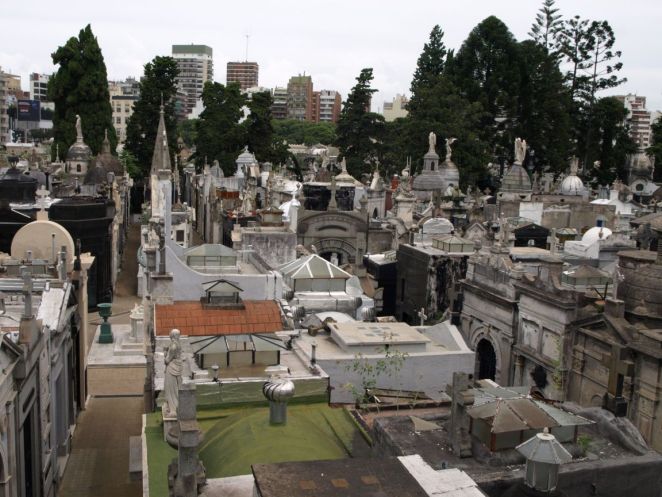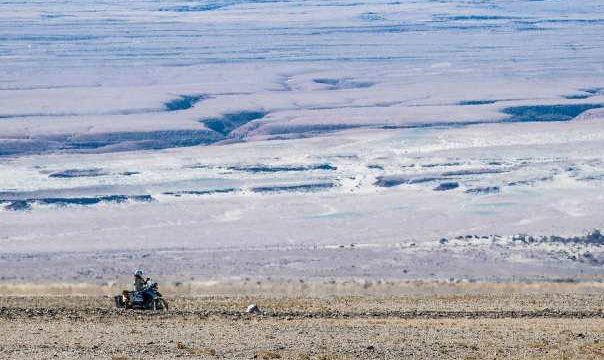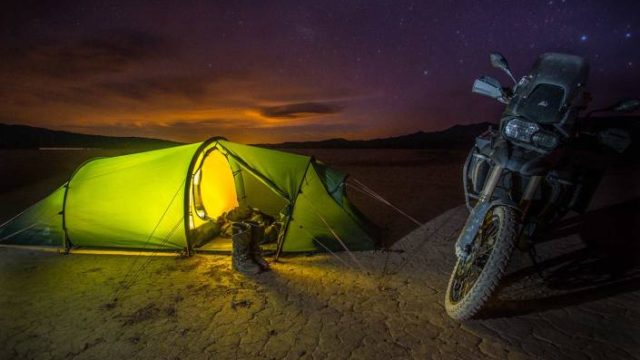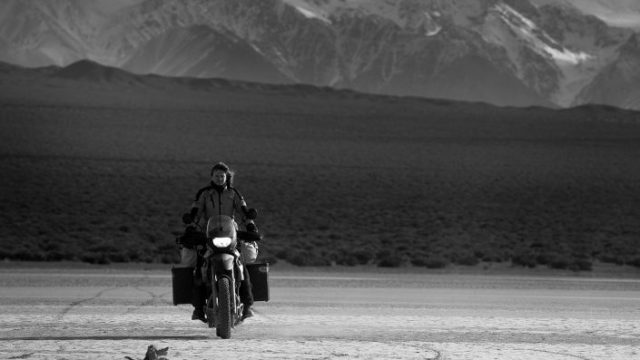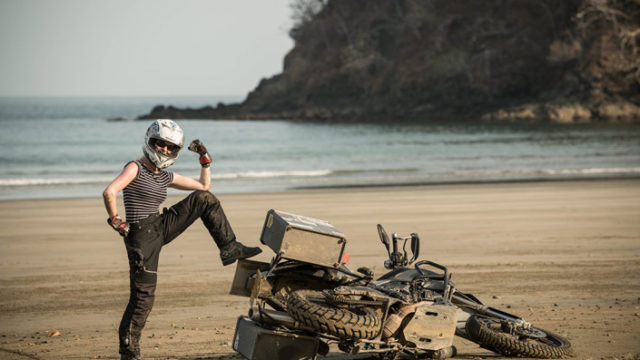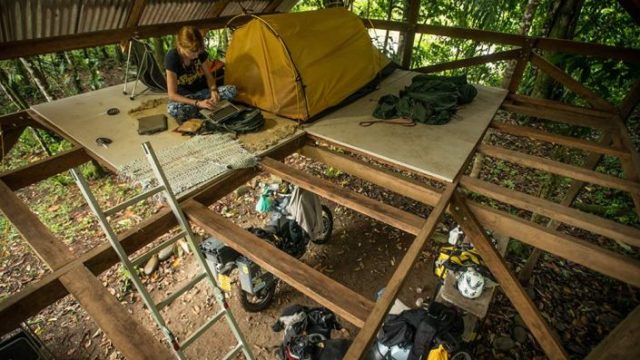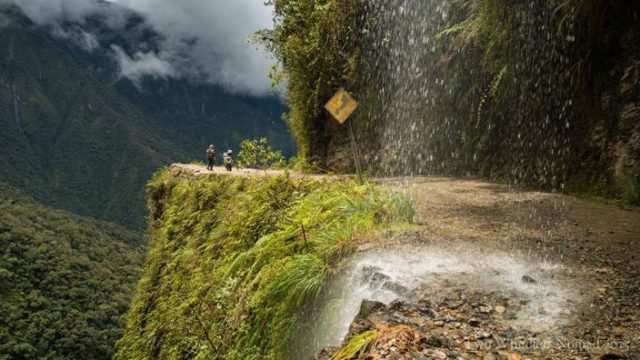Back in Buenos Aires (BA) post a zippy 18 hour bus ride, it felt like we’d been dealt a second chance card. We had cheated ourselves on the previous breathtakingly scanty visit, eager to be at the world’s edge. Due to the onset of snow we hadn’t seen the city’s centrepiece, namely its colonial architectural elegance nor been enveloped by the ginormous jacaranda trees. November is one of the best times of year to be in the capital, not least for the splendour of the jacaranda’s blue trumpet shaped flowers, fluttering down on you like silky rain.
With only three days at our disposal, we purposely stayed at Recoleta Hostel boasting a sunny rooftop terrace, accommodating staff and freshly homemade bread at breakfast; about the cheapest lodging closest to Cementerio de la Recoleta as well. After the primal experience of being in the clutches of the Devil’s Throat, Iguazu’s most monstrous waterfall, it felt calming to go somewhere a bit more sacred.

It was not your conventional burial ground lined with neat rows of graves regularly punctuated by engraved headstones. Recoleta’s cemetery had a labyrinth of stately streets lined with imposing statues, marble sarcophagi and mausoleums housing ornate and beautifully adorned tombs – complete with a resident ginger cat on patrol, Toto. It was visually grabbing as a book is un-put-downable but it didn’t take long before I could feel myself getting lost in this architectural grandeur.

Stood proud or kneeled over the deceased, the winged angels seemed to carry a calming aura; brought to life through searching eyes behind a mesh of cobwebs, as old as time itself. The sense of watching was powerful. Not threatening necessarily, just…eerie. There was also a tangible peace about the place, although I wouldn’t fancy walking those quiet streets at night. I left that task to Toto. Before my mind had time to arouse any further musings, Toto had parked his bum on my lap, paddled his paws for a moment on my legs and looked up with eyes that craved affection.

The coffins – some subterranean in crypts while others were showcased behind glass fronted buildings – held the remains of the city’s bygone elite: past presidents, military heroes and influential politicians alongside the rich and famous. Included in such historical remnants was the final resting place of Eva Peron, otherwise known as Evita.
Interestingly Evita rose to power alongside her husband and became one of the most revered political figures in South America. She supposedly eclipsed the legacy of the president, her man. She reached out to the nation’s poor, who came to love her dearly. She built housing for the impoverished, created programmes for children and distributed provisions to families on the breadline. As well, she allegedly: campaigned for the aged, offered health services to the destitute and advocated a law extending suffrage to women. This lady was on the verge of saving humanity!
 In her second term in office, at the height of her popularity she died suddenly. At the age of 33 from cancer. A massive blow to what Evita called the country’s descamisados (the shirtless ones), although the couple was said to rule with an iron fist. This may’ve been down to the fact they jailed opposition leaders, banned any medium referring to her as an ‘illegitimate child’ and confiscated assets and resources from the retired richer classes, among other acts that led to a benefits-driven society reliant on a popularist government. I understand that today Evita still holds sway with some; there was no denying the extent to which she gifted on a massive scale to the struggling Argentinean classes. Was she a true economical leader – many say not. Did she empower folk or create a culture of dependent people unwilling to work? A controversial woman who left a somewhat challenging legacy in her wake.
In her second term in office, at the height of her popularity she died suddenly. At the age of 33 from cancer. A massive blow to what Evita called the country’s descamisados (the shirtless ones), although the couple was said to rule with an iron fist. This may’ve been down to the fact they jailed opposition leaders, banned any medium referring to her as an ‘illegitimate child’ and confiscated assets and resources from the retired richer classes, among other acts that led to a benefits-driven society reliant on a popularist government. I understand that today Evita still holds sway with some; there was no denying the extent to which she gifted on a massive scale to the struggling Argentinean classes. Was she a true economical leader – many say not. Did she empower folk or create a culture of dependent people unwilling to work? A controversial woman who left a somewhat challenging legacy in her wake.
 Another bus journey under our belts: BA to Tierra del Fuego – although akin to flying business class – morphed into a tedious road trip after 50 hours straight. We’d clocked over 100 hours by bus inside a week where the latest coach-going epic was complete with a bureaucratic delay at one of the borders. C’est la vie, we were well on our way to circumnavigating Argentina, again. Although this time by four wheels rather than our trusty two. I pined after Pearl although repeating the boundless voids of Ruta 3’s bland landscape would have made a dreary ride; costing us wear and tear on the bikes, pockets more pesos and our sanity.
Another bus journey under our belts: BA to Tierra del Fuego – although akin to flying business class – morphed into a tedious road trip after 50 hours straight. We’d clocked over 100 hours by bus inside a week where the latest coach-going epic was complete with a bureaucratic delay at one of the borders. C’est la vie, we were well on our way to circumnavigating Argentina, again. Although this time by four wheels rather than our trusty two. I pined after Pearl although repeating the boundless voids of Ruta 3’s bland landscape would have made a dreary ride; costing us wear and tear on the bikes, pockets more pesos and our sanity.
A young eternity later: Ushuaia. Take Two! Upon entering the town, I got that heady mix of familiarity, nostalgic fondness for a place and a growing anticipation in meeting up with friends, old and new. Not to mention the voyage of a lifetime. Shimmed between the Beagle Channel and the snow-capped Martial Range, Ushuaia’s bustling port is the final trace of civilization seen by Antarctica-bound boats, our next port of call.

More than just the world’s southernmost town, Ushuaia is teeming with bikers around mid-November. Why? Encuentro Internacional de Motovjijeros en el Fin del Mundo is a mouthful and why. An international gathering of motorcycle travellers at the world’s end. Our timing was flawless on that occasion.

Our Irish biking friends Mike and Orla wended their way down from Chile and joined us for the short window we had in Ushuaia. Reuniting with them took a blink of a moment to pick up where we’d left off. It was ‘savage’ fun with Mike’s brother Fintan and sister Neasa on top, engage in a constant cook-a-thon for the human dustbins amongst us and thrash – okay – get bashed by the Irish at card games. They were a hoot and they showed us a good craic!
Hanging out in feel-good surroundings, benefitting the body by climbing a mountain and rewarding one’s wellbeing with some home-cooked winter-warmers is often all it takes. We were just six friends, and all pretense and protocol couldn’t hold against the bonds of our shared experiences.
